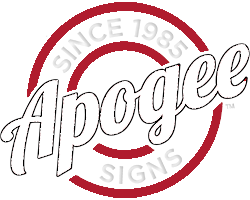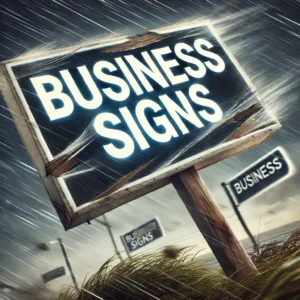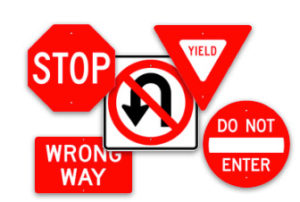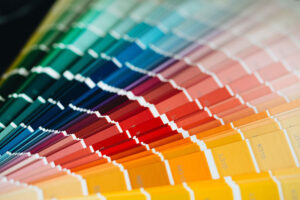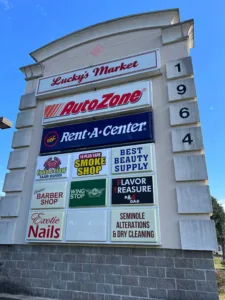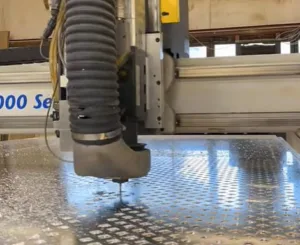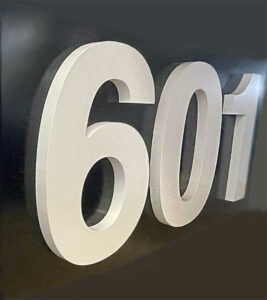
In the realm of visual communication, signage stands as a powerful medium for conveying messages, establishing brand identities, and guiding individuals through spaces. Among the array of signage options, dimensional letters emerge as a captivating fusion of artistry and functionality. With their ability to transform flat surfaces into dynamic, three-dimensional displays, 3D letters offer a tactile experience that commands attention and ignites curiosity. From the intricate fabrication process to their strategic integration in diverse environments, this article embarks on a journey to explore the world of dimensional letters, unraveling the craftsmanship, applications, and aesthetic prowess that make them an indispensable tool in the designer’s repertoire. Whether gracing storefronts, amplifying brand logos, or enhancing interior spaces, 3D letters invite us to contemplate the intersection of design and communication in a tangible and engaging manner. Join us as we uncover the impact and significance of dimensional letters in the realm of signage.
Here’s how 3D letters are typically created and used in signage:
- Material Selection: The choice of material depends on the desired appearance, budget, and location of the signage. Common materials include acrylic, known for its sleek modernity; metals like aluminum or stainless steel, conveying durability and prestige; PVC, a versatile and cost-effective option; foam, offering lightweight flexibility; and wood, exuding warmth, and a touch of natural elegance. Material selection not only affects aesthetics but also influences factors like weather resistance and longevity.
- Cutting or Fabrication: The 3D letters are typically cut or fabricated using techniques like laser cutting, CNC routing, or hand carving. These precision methods allow for intricate detailing, ensuring each letter is formed with accuracy and finesse. Whether it’s the clean lines of laser-cut acrylic or the artistic touch of hand-carved wood, the chosen fabrication technique contributes to the final visual impact of the signage.
- Layering and Assembly: The cut-out letters or shapes are layered or assembled to create the desired depth. This might involve using multiple layers of material or attaching additional elements to the base layer. The layering process adds dimensionality, making the letters pop off the surface and creating an engaging visual contrast. The artful arrangement of layers contributes to the sign’s texture and depth, captivating viewers from different angles.
- Finishing: The letters are often finished to match the desired aesthetic. This can include painting, polishing, laminating, or applying various finishes to achieve the desired appearance, color, or texture. The finishing touches serve not only to enhance the visual appeal but also to protect the material from environmental factors. Whether it’s a glossy finish that catches the light or a matte texture that exudes sophistication, the choice of finish contributes to the overall impression the signage leaves.
- Mounting: Dimensional 3D letters can be mounted directly to a surface or installed with spacers to create a floating effect. Mounting methods depend on the surface type, installation location, and the weight of the letters. The way the letters are mounted affects their visibility and impact. Flush mounting provides a seamless integration with the surface, while using spacers creates a captivating shadow effect that enhances the three-dimensional appearance of the letters.
- Illumination: In some cases, dimensional letters can be illuminated to enhance visibility, especially at night. This can be achieved through built-in LED lighting or by backlighting the letters. Illuminated 3D letters take signage to another level, ensuring visibility even in low-light conditions and adding an inviting ambiance. LED illumination not only provides practical benefits but also adds a touch of modernity and sophistication to the signage’s aesthetic.Top of Form
Dimensional 3D letters, with their ability to transform simple signage into captivating visual statements, have found their place in a multitude of environments, both indoors and outdoors. From enhancing brand recognition to guiding individuals through complex spaces, their versatility knows no bounds. This section explores the wide-ranging applications of dimensional letters, highlighting their significance in various contexts.
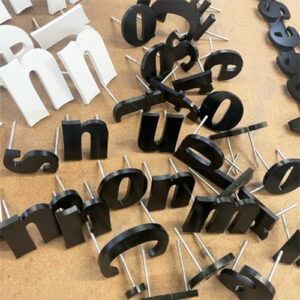
- Business Signage: 3D letters are often used for storefronts, office signs, and building signage to create a professional and eye-catching appearance. These letters serve as the initial introduction to a business, leaving a lasting impression on customers and passersby. The three-dimensional effect adds depth to the signage, instantly capturing attention and conveying a sense of establishment.
- Branding and Logos: Many companies use dimensional letters to display their logos, helping to reinforce their brand identity. The 3D representation of a logo elevates its visibility and impact, making it a focal point for brand recognition. The tactile quality of dimensional letters enhances the logo’s presence and resonates with viewers on a deeper level.
- Wayfinding Signs: Dimensional letters can be used for directional signs and room identification in large buildings or campuses. By incorporating depth and visual intrigue, these signs aid in navigation and orientation within complex environments. Whether guiding visitors through a sprawling hospital or a bustling university campus, dimensional letters enhance wayfinding with their distinct appearance.
- Trade Shows and Events: They are used to create attention-grabbing displays and booths at trade shows and events. In the dynamic world of trade shows and exhibitions, dimensional letters lend a sense of professionalism and allure to booths. Exhibitors utilize them to make a strong visual impact, drawing attendees’ eyes and generating interest in their offerings.
- Interior Decor: In interior design, 3D letters can add a unique and artistic element to spaces, such as restaurants, hotels, and retail environments. Within interior spaces, these letters transcend mere signage, becoming integral elements of decor. Whether adorning the walls of a trendy cafe or adding flair to a boutique hotel’s lobby, dimensional letters contribute to the ambiance and aesthetic of the space.
As we conclude our exploration of the captivating realm of dimensional letters, it becomes evident that these three-dimensional wonders are far more than mere signage; they are the embodiment of creativity, innovation, and effective communication. From the meticulous selection of materials that cater to both aesthetics and durability, to the intricate fabrication techniques that breathe life into designs, dimensional letters stand as a testament to the marriage of artistry and functionality. Layer upon layer, they build depth and intrigue, transforming a flat canvas into an attention-commanding spectacle. These 3D letters, whether backlit and illuminating the night or gracing the interiors of upscale establishments, leave an indelible mark on the viewer’s perception. Their purpose spans from aiding navigation within expansive structures to punctuating brand identities with a touch of elegance. As we part ways with this exploration, let us carry with us the understanding that the journey of dimensional letters transcends materials, techniques, and applications—it is a journey of captivating design that bridges the gap between communication and aesthetic impact in three dimensions.
